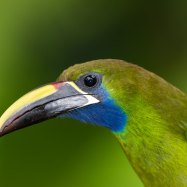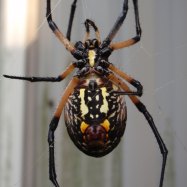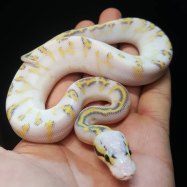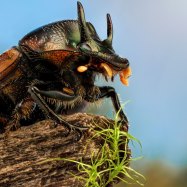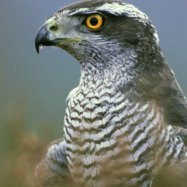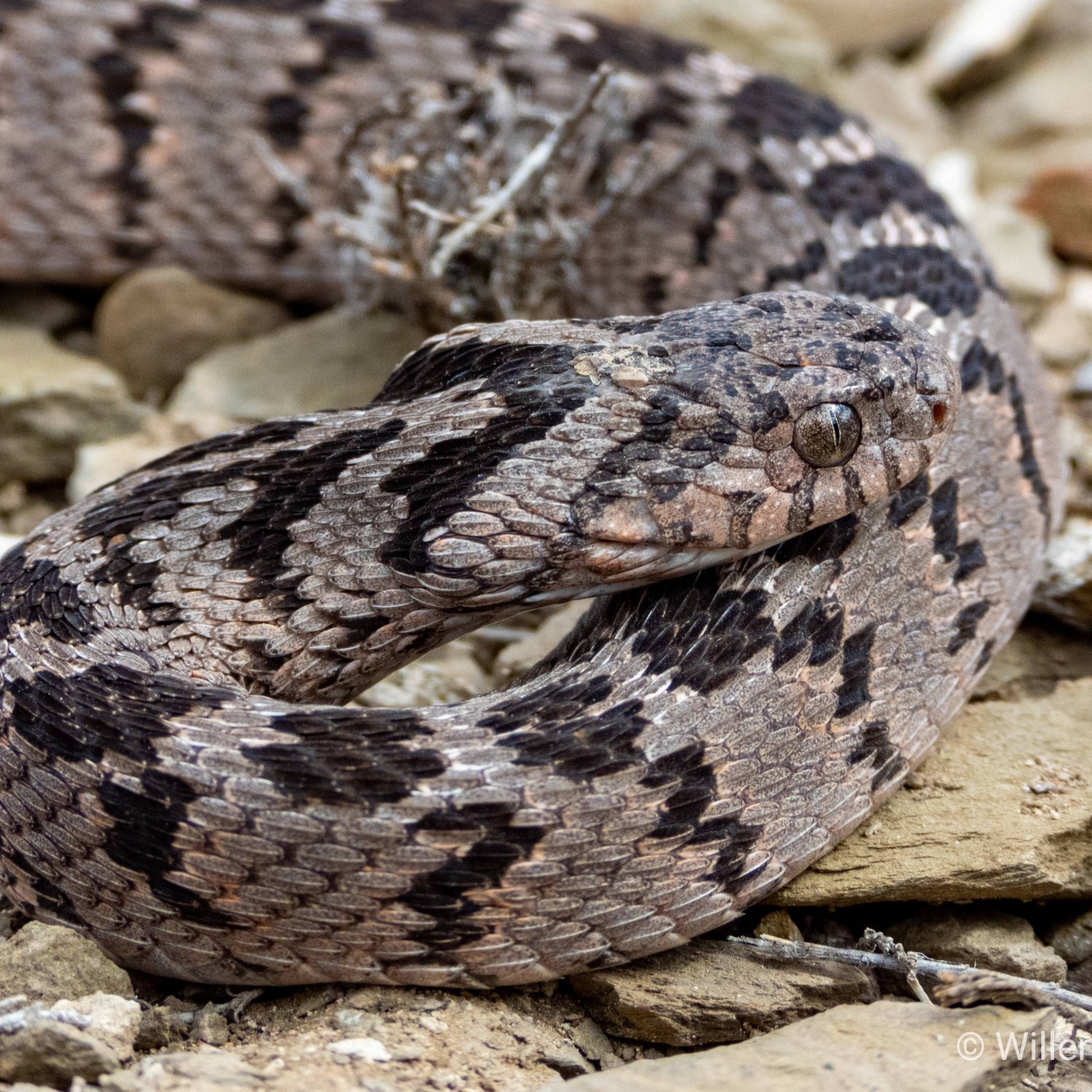
Rhombic Egg Eater Snake
60 - 100 cm (24 - 39 inches)
Rhombic egg eater snakes, found in Africa, are known for their slender and elongated bodies, reaching lengths of 60-100cm. These colubridae family members have a unique diet - they feed only on eggs! They can be found in various habitats and are important for maintaining a balanced ecosystem.
Animal Details Summary:
Common Name: Rhombic Egg Eater Snake
Kingdom: Animalia
Habitat: Savannahs, grasslands, forests
The Mysterious Rhombic Egg Eater Snake: A Closer Look at One of Africa’s Most Unique Reptiles
Hidden among the vast savannahs, grasslands, and forests of sub-Saharan Africa, lives a mysterious reptile that has fascinated scientists and snake enthusiasts alike for centuries – the Rhombic Egg Eater Snake. With its unique diet, specialized adaptations, and striking coloration, this serpent truly stands out from the rest. In this article, we’ll take a closer look at the Rhombic Egg Eater Snake and all of its intriguing features.A Name That Says It All
Scientifically known as Dasypeltis scabra, the Rhombic Egg Eater Snake derives its common name from its specialized diet of bird eggs Rhombic Egg Eater Snake. This species belongs to the Colubridae family, a group of snakes known for their diverse habitats and feeding habits. The Rhombic Egg Eater Snake is also commonly referred to as the Rhombic Rough-scaled Snake, due to the rough texture of its scales.Kingdom, Phylum, Class, Order – Where Does It Belong?
The Rhombic Egg Eater Snake falls under the Animalia kingdom, meaning it is classified as an animal. It is part of the phylum Chordata, a group of animals that possess a notochord (an embryonic structure that develops into the spine) at some point in their lifetime. The class Reptilia includes all reptiles, and the order Squamata includes lizards and snakes. Within the order Squamata, the Rhombic Egg Eater Snake belongs to the family Colubridae, which includes approximately two-thirds of all snake species.A Habitat Fit for a Snake
The Rhombic Egg Eater Snake can be found in various habitats across Africa, including savannahs, grasslands, forests, and even rocky areas. This serpent is not limited to a specific region, and can be found in multiple countries including South Africa, Namibia, Zimbabwe, Mozambique, and many others. Its adaptability to various environments makes it a successful and widespread species Reef Shark.Feeding Method and Diet
As its name suggests, the Rhombic Egg Eater Snake has a highly specialized diet – bird eggs. This snake is one of the few nonvenomous species known to possess a specialized diet, making it a unique and intriguing creature. It primarily feeds on eggs from ground-nesting birds, such as ducks, quails, or pheasants. It uses its powerful jaws and unique egg-breaking technique to crack open the eggshells and consume the nutritious contents inside. Interestingly, this snake is known to eat the entire nest of eggs in one sitting, sometimes even consuming up to 30 eggs at a time.A Colorful Mystery
One of the most distinctive features of the Rhombic Egg Eater Snake is its variable coloration. Its body can range from gray to brown to black, often with a pattern of darker diamond shapes or lines. This coloration varies depending on the individual and can also change throughout its life. Although exact reasons for this unique coloration are unknown, it is believed to serve as camouflage, helping the snake blend in with its surroundings.A Slender and Elongated Body
The Rhombic Egg Eater Snake is a relatively small species, with a slender and elongated body that ranges from 60 – 100 cm (24 – 39 inches) in length. Its small size and thin body make it a swift and agile predator, allowing it to maneuver through tight spaces and capture elusive prey.Survival of the Fittest
Being a nonvenomous species, the Rhombic Egg Eater Snake relies on its specialized diet and unique adaptations to survive. Its rough scales provide protection against predators, while its slender body and ability to camouflage help it hunt effectively. Like other snakes, this species also has a forked tongue, which is used to smell and locate prey. Once the prey is found, the snake uses its powerful jaws and specialized egg-breaking technique to consume its meal.A Threatened Species?
Despite being widely distributed throughout Africa, the Rhombic Egg Eater Snake faces several threats to its survival. One of the major factors being human activity, particularly habitat destruction and the illegal pet trade. As their natural habitats continue to diminish, these snakes are forced to adapt to new environments, which can be challenging for their specialized diet. The illegal pet trade is also a major concern, as these snakes are sought after for their unique appearance and specialized feeding habits. Fortunately, conservation efforts are in place to protect this vulnerable species and ensure its survival for future generations to witness its beauty.The Fascinating World of the Rhombic Egg Eater Snake
In conclusion, the Rhombic Egg Eater Snake is a truly remarkable and mysterious creature. From its specialized diet to its unique coloration and adaptations, this species has captivated scientists and snake enthusiasts for decades. As we continue to learn more about this fascinating serpent, it is essential to protect its habitats and ensure its survival in the wild. So the next time you venture into the African savannahs or grasslands, keep an eye out for this elusive and extraordinary snake – the Rhombic Egg Eater Snake.

Rhombic Egg Eater Snake
Animal Details Rhombic Egg Eater Snake - Scientific Name: Dasypeltis scabra
- Category: Animals R
- Scientific Name: Dasypeltis scabra
- Common Name: Rhombic Egg Eater Snake
- Kingdom: Animalia
- Phylum: Chordata
- Class: Reptilia
- Order: Squamata
- Family: Colubridae
- Habitat: Savannahs, grasslands, forests
- Feeding Method: Specialized diet of bird eggs
- Geographical Distribution: Sub-Saharan Africa
- Country of Origin: Multiple countries in Africa
- Location: Various habitats in Africa
- Animal Coloration: Variable coloration (gray, brown, black)
- Body Shape: Slender and elongated body
- Length: 60 - 100 cm (24 - 39 inches)
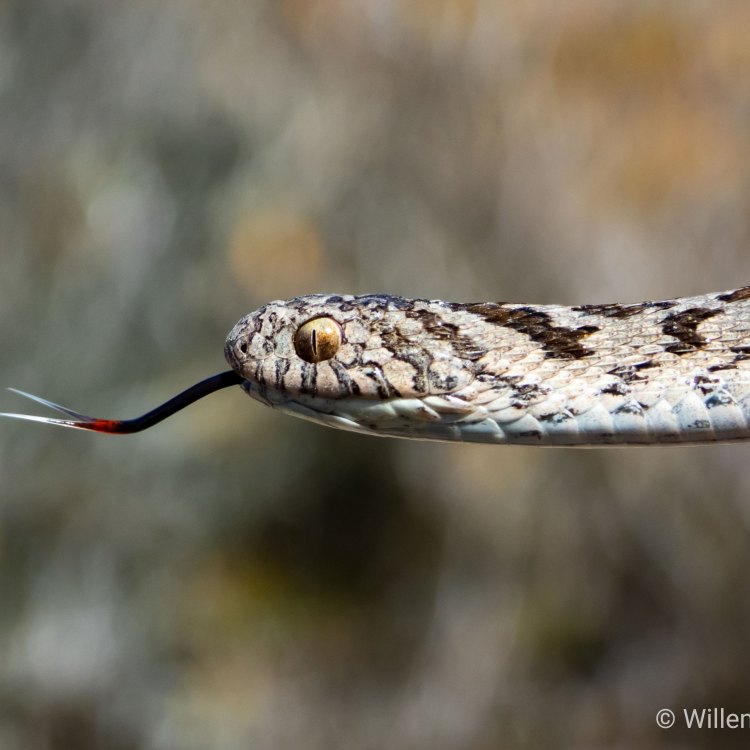
Rhombic Egg Eater Snake
- Adult Size: Medium-sized
- Average Lifespan: 10 - 15 years
- Reproduction: Egg-laying
- Reproductive Behavior: Females lay eggs in hidden locations
- Sound or Call: Does not produce vocalizations
- Migration Pattern: No regular migration pattern
- Social Groups: Solitary
- Behavior: Nocturnal, secretive
- Threats: Habitat loss, collection for pet trade
- Conservation Status: Least Concern
- Impact on Ecosystem: Helps control bird populations
- Human Use: Collected as pets
- Distinctive Features: Smooth scales, elongated body
- Interesting Facts: Rhombic egg eater snakes have specialized teeth and enlarged vertebrae to help them swallow bird eggs whole.
- Predator: Birds of prey, mammalian predators
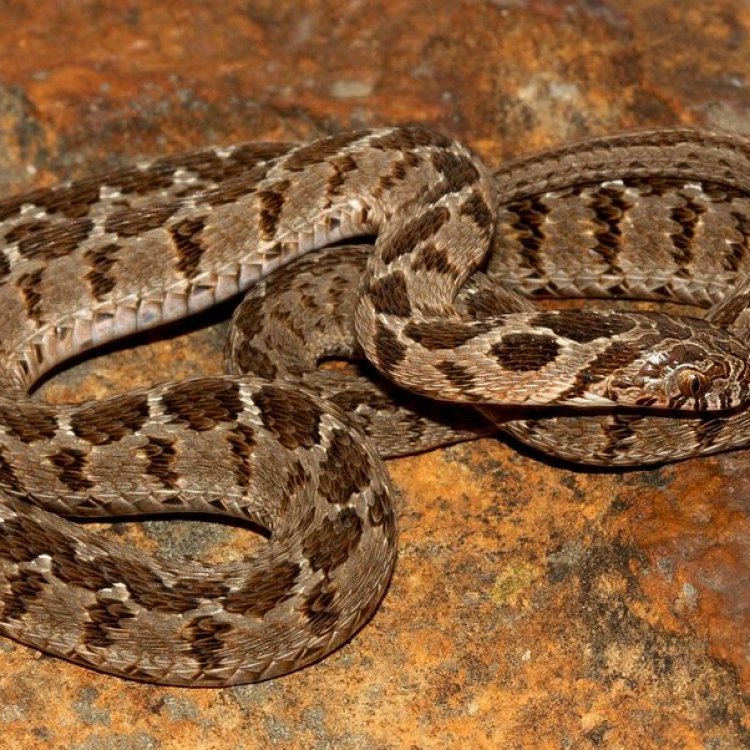
Dasypeltis scabra
The Mysterious Rhombic Egg Eater Snake: A Hidden Gem among Reptiles
When you hear the word "snake," what often comes to mind are images of long, winding, and potentially dangerous creatures. However, not all snakes fit into this stereotypical image. Meet the rhombic egg eater snake, a unique and fascinating species that challenges traditional perceptions of snakes.From its reproductive behavior to its distinctive features, the rhombic egg eater snake has captured the attention of biologists and reptile enthusiasts alike PeaceOfAnimals.Com. In this article, we will delve into the hidden world of the rhombic egg eater snake and shed light on its intriguing characteristics.
Size and Lifespan
The first thing that sets the rhombic egg eater snake apart from other snakes is its size. As its name suggests, it is a medium-sized species, typically reaching lengths of 2 to 3 feet when fully grown. This makes it a relatively small and manageable snake compared to other species.
On average, the rhombic egg eater snake has a lifespan of 10 to 15 years in captivity. However, in the wild, their lifespan may be slightly shorter due to various factors such as predation, disease, and habitat loss.
Reproduction and Behavior
One of the most interesting aspects of the rhombic egg eater snake is its reproductive behavior. As a species of egg-laying snake, females lay their eggs in hidden locations, usually underground or in leaf litter. This behavior is essential for the survival of the species, as it helps protect the eggs from predators Raccoon Dog.
In terms of its overall behavior, the rhombic egg eater snake is predominantly nocturnal and secretive. This means that it is most active during the night and prefers to hide during the day. This behavior makes it challenging to spot in the wild, adding to its mysterious and elusive nature.
Distinctive Features
While the rhombic egg eater snake may not be as visually striking as other snakes, it does have some distinctive features that set it apart. Its smooth scales and elongated body make it easy to identify. These physical characteristics also play a significant role in the snake's ability to swallow its prey whole.
One of the most fascinating things about the rhombic egg eater snake is its specialized teeth and enlarged vertebrae, which help it swallow bird eggs whole. This is a unique adaptation that allows the snake to consume a food source that is not available to many other species.
Threats and Conservation Status
Like many other snake species, the rhombic egg eater snake is facing several threats to its survival. One of the main threats is habitat loss, as human activities such as deforestation and urbanization continue to encroach upon the snake's natural habitat.
Furthermore, the rhombic egg eater snake is also collected for the pet trade. While this species may seem like an appealing pet due to its manageable size and relatively docile nature, it is important to remember that wild animals belong in their natural habitats, not in homes as pets.
Currently, the rhombic egg eater snake is listed as "Least Concern" on the IUCN Red List of Threatened Species. This means that it is not facing any immediate threat of extinction. However, it is crucial to monitor the species' population and habitat to ensure its long-term survival.
Impact on the Ecosystem
Despite their fearsome reputation, snakes play a vital role in their ecosystems. The rhombic egg eater snake, in particular, helps control bird populations by consuming their eggs. This is an essential function, as unchecked bird populations can disrupt the balance of an ecosystem.
Human Use
As mentioned earlier, the rhombic egg eater snake is sometimes collected and kept as a pet. While this practice may seem harmless, it can have negative consequences for the snake and its natural habitat. Therefore, it is crucial to educate the public about the importance of leaving wild animals in the wild and not supporting the exotic pet trade.
Predators
Like all animals, the rhombic egg eater snake has its share of predators. Birds of prey and mammalian predators such as foxes, coyotes, and raccoons are known to feed on these snakes. Their nocturnal behavior and cryptic coloration are helpful in avoiding predators, but they are not always successful.
In addition to being preyed upon, the rhombic egg eater snake also plays a crucial role in the food chain. As an egg eater, it helps regulate the population of birds, acting as a control against potential overpopulation.
Fascinating Factoids
- The rhombic egg eater snake is a member of the Lamprophiidae family, which includes a diverse group of snakes found primarily in Africa.
- Egg-eating snakes are sometimes referred to as "false egg eaters" because they are able to consume much larger prey items besides eggs.
- The rhombic egg eater snake can inflate its body when threatened, making itself appear larger as a defense mechanism.
- Scientists have discovered that these snakes are immune to the toxins found in bird eggs, making it easier for them to consume their preferred food source.
- The rhombic egg eater snake is not venomous and poses no threat to humans.
In conclusion, the rhombic egg eater snake may not be the most well-known or colorful species, but it certainly has its own unique set of characteristics and adaptations. From its egg-laying and secretive nature to its specialized teeth and impact on the ecosystem, this snake is truly a hidden gem among reptiles.
As with all wildlife, it is crucial to respect and protect the rhombic egg eater snake and its environment. By understanding and appreciating these fascinating creatures, we can ensure that they continue to thrive in their natural habitats for generations to come. So, the next time you come across a rhombic egg eater snake, take a moment to appreciate its beauty and importance in the natural world.
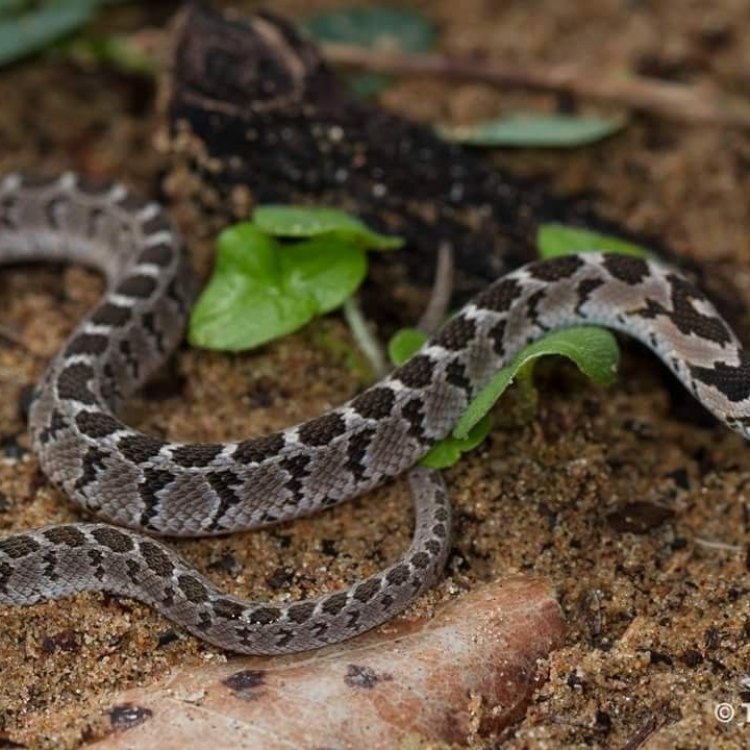
The Mysterious Rhombic Egg Eater Snake: A Closer Look at One of Africa’s Most Unique Reptiles
Disclaimer: The content provided is for informational purposes only. We cannot guarantee the accuracy of the information on this page 100%. All information provided here may change without prior notice.


